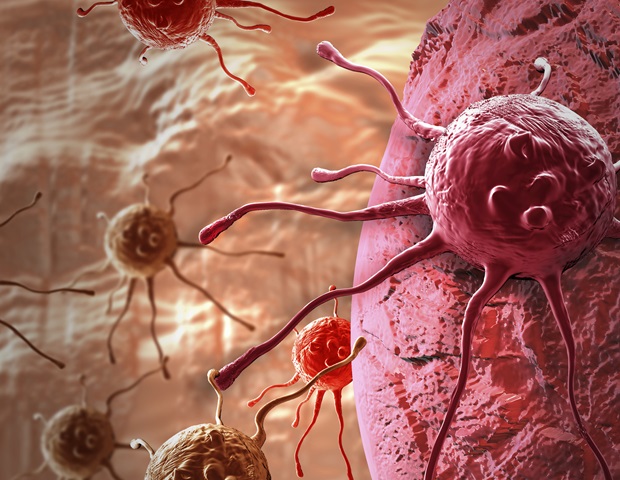New Studies Reveal Tug-of-War Between Hunger and Satiety in the Brain

Scientists have long understood that the stomach communicates with the brain regarding hunger and satiety. However, recent studies conducted by researchers from Rutgers Health reveal that this conversation resembles a tug-of-war, with one side urging for another bite while the other signals that it’s time to stop eating. These insights, published in the journals Nature Metabolism and Nature Communications, provide a detailed wiring diagram of hunger and satiety, which could potentially enhance the effectiveness and reduce side effects of popular weight-loss medications.
In a groundbreaking study led by Zhiping Pang from Robert Wood Johnson Medical School's Center for NeuroMetabolism, researchers pinpointed a delicate bundle of neurons that extends from the hypothalamus to the brainstem. This neural connection is rich in GLP-1 receptors, which are the same proteins that weight-loss drugs like Ozempic aim to mimic. When Pang’s team utilized light pulses to stimulate this pathway, well-fed mice ceased eating. Conversely, when they silenced this neural circuit or deleted the receptors, the mice began to gain weight. Notably, fasting weakened this neural connection, but it could be restored with bursts of natural or synthetic GLP-1.
“The synapse acts like a volume knob that only turns up when energy reserves are low,” Pang explained. He cautioned that medications designed to maintain high levels of this signal at all times could disrupt the brain's natural rhythm, leading to common side effects associated with GLP-1 drugs, including nausea, vomiting, constipation, diarrhea, and muscle wasting.
In a complementary study, Mark Rossi, who co-leads the Center for NeuroMetabolism alongside Pang, investigated the neural pathways that instigate hunger. His team traced inhibitory neurons from the stria terminalis to similar cells in the lateral hypothalamus. The results were striking: when the researchers activated this connection, mice displayed a sudden urgency for sugar water, sprinting towards it. However, when the connection was blocked, the same mice remained unmotivated even after fasting.
The effects of hormones were also significant in this study. An injection of ghrelin, often referred to as the gut's hunger messenger, stimulated food-seeking behavior, while leptin, known as the satiety hormone, effectively shut it down. Notably, overindulged mice gradually lost sensitivity to these signals, but this responsiveness returned once they adopted a thinner diet.
Pang remarked, “Our pathway shuts things down,” while Rossi added, “Ours steps on the accelerator.” Both studies revealed a fascinating principle: the state of energy in the body rapidly rewires synapses. During fasting, the hunger circuit becomes more sensitive, while the satiety circuit becomes less responsive; post-meal, the roles reverse.
This research marks the first instance where scientists have observed the simultaneous functioning of these opposing pathways, likened to a yin-yang dynamic, which could explain why treatments that focus solely on one aspect of hunger or satiety often lose their effectiveness over time. The findings also suggest potential avenues for creating medications that outperform current GLP-1 therapies, which, while effective in promoting significant weight loss, often come with undesirable side effects like nausea and gastrointestinal upset.
Notably, GLP-1 mimickers such as Wegovy and Zepbound can induce substantial weight loss, but they also carry the risk of side effects including nausea, diarrhea, and, in some cases, muscle wasting. Pang’s findings indicate that therapies targeting only the brainstem circuit while avoiding peripheral organs might help reduce eating without the accompanying side effects. On the other hand, Rossi’s research suggests that re-establishing the body’s natural response to ghrelin could provide a solution for dieters who hit a plateau after extended periods of caloric restriction.
Both studies employed cutting-edge techniques in neural biology, utilizing optogenetics to activate axons with laser light, chemogenetics to silence them, and fiber-optic photometry to observe calcium pulses. Additionally, they implemented traditional patch-clamp recordings to monitor singular synapses, allowing for unprecedented precision in tuning individual pathways.
Future research from both teams aims to delve deeper into these findings to further refine drug design. Pang is particularly interested in measuring GLP-1 release in real-time to determine whether brief bursts, rather than constant exposure, can effectively suppress appetite. Meanwhile, Rossi's team is cataloging the molecular identities of hunger-triggering cells with the hope of identifying drug targets that can modulate cravings without diminishing the pleasure associated with eating.
“We want to preserve the system's flexibility,” Rossi emphasized. “It’s the difference between dimming the lights and turning them off.” This approach suggests that enabling the brain to accurately adjust the desire to eat or stop eating throughout the day, rather than relying on drugs to consistently suppress appetite, may be a crucial component in the development of future weight-loss prescriptions.


























